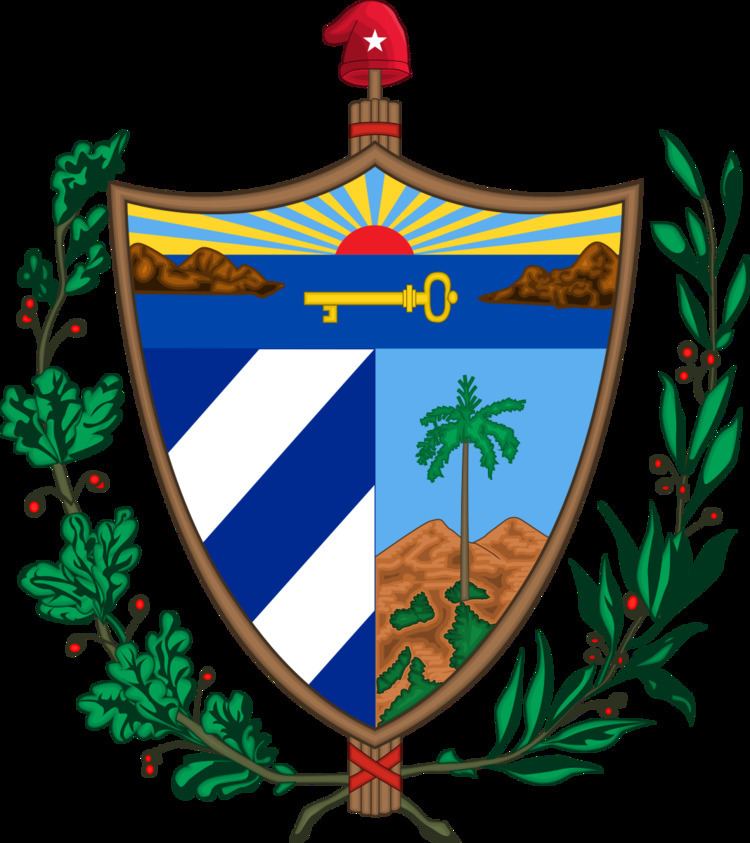Adopted 24 April 1906 | ||
 | ||
Crest In place of a crest, atop a fasces, a red phrygian cap charged with a Mullet of five points Argent Escutcheon Per pale, the first bendy sinister of five Azure and Argent; the second a landscape with a palmtree and two mountains in the distance, all proper; and on a chief under a rising sun a strait closed by a golden key, all proper. Supporters Oak branch and laurel wreath | ||
The Cuban Coat of Arms is the official heraldic symbol of Cuba. It consists of a shield, in front of a Fasces crowned by the Phrygian Cap, all supported by an oak branch on one side and a laurel wreath on the other. The coat of arms was created by Miguel Teurbe Tolón and was adopted on April 24, 1906.
Contents
Shield
The shield is divided into three parts:
In the chief, a key charging a blue sea between two rocks, symbolizing Cuba’s geographical position between Florida and the Yucatán Peninsula. A bright rising sun in the background symbolizes the rising of the new republic. A key is a symbol of Cuba as Cuba is the key to the Americas.
On the left are the stripes of the flag of Cuba but turned so as they are bendwise.
On the right is a common Cuban landscape, Royal Palm tree, a symbol of Cuba with mountains in the background.
Supporters
The shield is supported by an oak branch on one side and a laurel wreath on the other. The oak branch symbolizes the strength of the nation; and the laurel wreath: honor and glory. These symbols were meant to represent the rights of man: Equality, Liberty and Fraternity.
Helm/crest
A Phrygian Cap (Gorro Frigio) or liberty cap is located at the top, as a crown symbolizing liberty, with a sole star on it standing for independence.
Official description
"The National coat of arms represents our island. It is shaped like a pointed leather shield, and divided into three sections. In its horizontal upper part, there is a golden key between two mountains, and a sun rising over the sea - which symbolizes the position of Cuba in the Gulf, between the two Americas, amidst the emergence of a new state. The blue and white stripes, down the left hand side, represent the situation of the island, in terms of its division into states, in the colonial period. Down the right hand side, a Cuban country scene is dominated by a royal palm".
